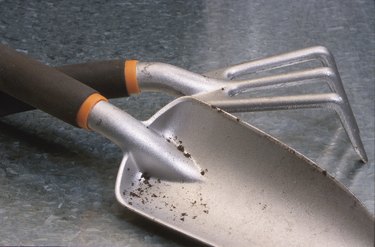
The Chinese happy plant, scientific name Dracaena fragrans "Massangeana" and also known as a corn plant, is a common houseplant found in many gardening stores. It is extremely easy to care for and tolerates neglect better than many other popular houseplants. Many offices and home entryways use them because of their low light tolerance and tall, slim form.
Light
Video of the Day
Corn plants like bright light but cannot tolerate full sun. Intense direct sun will burn the leaves. Indoors, keep the plants in an east- or west-facing window out of direct sun or in a shaded southern window. They can be put outside during the spring and summer months as long as the location remains shaded.
Video of the Day
Soil
Corn plants are readily adaptable to most types of soil. They prefer a rich mix high in organic matter that drains well. However, they can thrive in much poorer soils such as clay and sand. They do not like any type of soil that remains soggy.
Water
Corn plants like to dry out between waterings. Brown leaf tips are a sign of both under watering and overwatering. To check if a plant needs water, dig about an inch or 2 below the surface and see whether it is dry. If it is, then it is time to water.
Propagation
Cuttings of the main stem will sprout new leaf shoots and roots. Commercial growers propagate large quantities by stripping the canes of their foliage and placing the stem horizontally in the soil. Each node produces a new cane and set of roots. At home, the tops of plants can be cut off and the stem pushed several inches into moist soil where they will take root and a new plant will grow.
Outdoor Growth
The plant is hardy in USDA zones 10B through 11 where it can be grown year round. In cooler climates it can be put outdoors as soon as the threat of the last frost is over in the spring and brought inside before the first frost in fall. When keeping it in a container outside, make sure the pot is heavy enough to keep tall plants from toppling over in the wind.